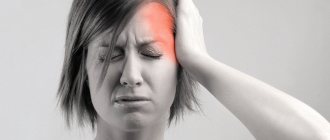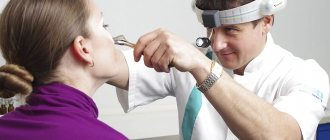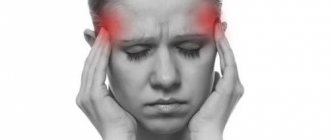Why does my head hurt? Headaches come in different forms and, therefore, have different causes. But pain in the head cannot be ignored. Find out why!
Many of us have heard more than once that headaches should never be tolerated. You can get rid of unpleasant sensations only by identifying the source of the discomfort. It is interesting that narrow specialists look at this problem from different angles. For example, neurologists will say that your head hurts because there are reasons that lie in the brain. But the therapist will most likely say that this is caused by problems with the blood vessels. At the same time, the psychotherapist will even refer to stressful situations that do not have the best effect on health. The most interesting thing is that all the doctors are right.
The reason why a headache can be due to lack of sleep, osteochondrosis, and stress... It is also necessary to leave this problem unattended because it can be caused by serious health problems, for example, meningitis. Today we will look in detail at the reasons why you have a headache and how to deal with it.
Why does my head hurt?
According to WHO estimates, every year from 50 to 75% of the world's adult population aged 18 to 65 years experience headaches, of which 30% or more complain of migraine.
Headache is a worldwide problem, affecting people of all ages, races, income levels and regions of residence. Patients can describe many different sensations and conditions as a headache: heaviness in the back of the head, pain in the forehead or closer to the neck, in the temples, in the eye area, a feeling of pressure, sharp, throbbing, pulling or aching pain. The variety of headache manifestations is due to the presence of a large number of causes for its occurrence.
In clinical practice, there are more than 150 types of headaches. The most general classification divides the causes of pain into primary and secondary. Primary causes are not associated with any pathology of the central nervous system and internal organs, while secondary causes are a symptom of various diseases or injuries.
Headaches are caused by external and internal factors. Primary pain occurs under the influence of:
- severe stress and nervous tension;
- excessive physical activity;
- lack of sleep or excess sleep;
- long stay in a stuffy room or transport;
- weather conditions: sudden changes in temperature, air humidity and atmospheric pressure;
- strong odors, such as excessive perfume aroma;
- strict diets, fasting;
- sedentary lifestyle;
- sudden climate change, air travel;
- oxygen starvation;
- bright lights, blinking Christmas tree lights or festive illumination;
- hypothermia;
- uncontrolled use of certain medications.
For more than 45 diseases of various nature, headache can be the main complaint, especially at the initial stage of development of the pathology. Often this is the only pronounced symptom of vascular disorders, traumatic brain injuries, inflammatory processes in the body, and hormonal imbalance.
The main causes of secondary headaches:
- traumatic brain injuries;
- atherosclerosis and other vascular pathologies;
- inflammatory diseases of internal organs, for example, gastritis, pyelonephritis;
- hypertension and hypotension: increases and decreases in blood pressure are often accompanied by headaches;
- problems with the spine;
- infectious lesions of the nasopharynx, ears;
- poisoning with toxic substances;
- caries, periodontitis and other diseases of teeth and gums;
- malignant and benign brain tumors;
- depression;
- glaucoma - increased intraocular pressure and many others.
Based on other classifications, headaches vary in nature, sensation, strength, and location.
Headaches can have different mechanisms of occurrence. Pain is divided into:
- vascular - arising due to vascular spasm, loss of elasticity of the walls, narrowing of the lumen of blood vessels;
- muscle tension - when the cause of pain is muscle overstrain due to stress, neurosis and other factors;
- liquorodynamic - when there is a disturbance in the distribution of cerebrospinal fluid in the cranial cavity;
- neuralgic - as a result of irritation of nerve receptors;
- infectious-toxic - occur during poisoning and infectious diseases.
Sometimes headache syndrome is a consequence of the influence of several mechanisms at once, which significantly worsens the general condition.
Causes of mild headaches
A moderate headache usually occurs due to overwork, changes in weather, or lack of sleep. Such pain can accompany premenstrual syndrome in women. It usually goes away on its own after some time and does not require medical intervention.
Causes of severe headaches
A very severe headache is difficult to endure and almost impossible to relieve with medications. Excruciating pain occurs in the presence of tumors in the brain, fractures, infectious diseases, and sinusitis. Severe pain is one of the main symptoms of influenza, ARVI and other viral infections. The increasing intensity of pain indicates the development of a pathological process.
Causes of paroxysmal pain
Attacks of severe headaches are the main symptom of migraine. Also, this type of pain may indicate a hematoma in the brain.
Periodic attacks are well known to people with high blood pressure, vascular disorders, and problems with cerebral circulation. A sudden attack of pain can occur with spasm of cerebral vessels during a vascular crisis or exacerbation of cervical osteochondrosis. The condition is also characteristic of prolonged nervous overstrain.
Why does my head hurt every day?
Daily headaches are a serious reason to see a doctor and have a full examination. Daily pain can be a sign of a chronic inflammatory process in the body, the development of cervical osteochondrosis, hormonal imbalance, problems with blood pressure and many other dangerous conditions. An accurate diagnosis and adequate therapy will help cope with the causes of pain and normalize the condition.
Necessary examination
The first person you should contact if you have headaches is a therapist. He will conduct an initial examination and interview, and collect anamnesis. At the appointment, the doctor will measure your blood pressure, find out about the circumstances surrounding the pain, and refer you for an initial examination.
Read also: Why do you feel dizzy?
Lab tests:
- general blood test to exclude infectious diseases;
- biochemical blood test - to assess the condition of internal organs.
Instrumental examination methods:
- EEG - electroencephalogram of the brain to assess its activity and correct functioning;
- Ultrasound of the vessels of the neck and brain - evaluates the patency of arteries and veins;
- ECG - electrocardiogram to exclude pathologies on the side of the heart;
- X-ray of the neck - for a preliminary assessment of the condition of the spinal column;
- MRI of the cervical spine - magnetic resonance imaging allows you to qualitatively assess the presence of osteochondrosis or hernia;
- Brain CT - computed tomography can detect tumors and other changes in brain structures.
If deviations are detected, the therapist refers the patient to more specialized specialists: a cardiologist, a neurologist. If the examination results show no changes, this is a reason to suspect masked depression. In this case, you should consult a psychotherapist.
Types of headaches
Features of the types of headaches, their severity, localization, nature of the course and other signs make it possible to determine the cause of the pathology and carry out successful treatment. Our test will help you understand the cause of pain based on your sensations.
Migraine
Migraine is included by WHO in the TOP 20 diseases that have the most negative impact on people’s social adaptation. Among the population of Europe and the United States, 14% of the population suffers from migraine, and the pathology occurs twice as often in women as in men.
After tension-type headache (TTH), it is the most common cause of primary headache. Migraine is hereditary, with the first attack usually occurring between the ages of 10 and 20, reaching a maximum by age 40. With the onset of menopause, most women experience migraine relief.
The main symptom of migraine is periodic attacks of severe pain on one side of the head. Attacks can occur at a frequency ranging from once a week to once a month.
Distinctive signs of migraine pain syndrome:
- pulsating and pressing character,
- significant intensity,
- covering half the head,
- localization around the eyes, in the forehead and temple.
In some cases, the attack begins with severe pain in the back of the head, which later spreads to the frontal part.
There are two clinical types of migraine: with aura and without aura.
A migraine aura is the appearance about an hour before the onset of an attack of its precursors: visual disturbances, auditory hallucinations, changes in taste and smell, nausea and vomiting. The aura disappears with the onset of an attack of pain (Fig. 1).
Figure 1. Signs of migraine. Source: MedPortal
Ideas about the causes of migraine have changed over the past decades. If earlier it was considered as a vascular pathology, today it is believed that severe headache (during a migraine attack) is caused by increased excitability of cerebral pain receptors.
Migraine is typical for people with increased emotional excitability. Most often it occurs against the background of severe stress. The attack can be triggered by physical overexertion, premenstrual syndrome, or malnutrition.
Frequent attacks may be associated with taking certain hormonal medications, such as oral contraceptives or medications to relieve menopausal symptoms. A migraine trigger is also tyramine, a derivative of tyrosine, one of the basic amino acids that makes up protein. This substance can be found in cheese, red wine, chocolate, bananas, citrus fruits and many other foods.
Tension headache
This type of pain is familiar to almost every person, regardless of gender and age. Tension headache is the most common form of illness, the occurrence of which is associated with neurobiological factors. Scientists explain the pain syndrome by the increased sensitivity of pain structures of the brain to negative factors of the internal and external environment. The main causes of tension headaches:
- emotional overload;
- muscle tension associated with the need to stay in one position for a long time, for example, when working at a computer or driving a car;
- fatigue;
- lack of sleep and many others.
Typically, a tension headache affects both sides of the head, is often mild and does not greatly affect the usual way of life (Fig. 2).
Figure 2. Tension headache. Source: MedPortal
Pain is divided into episodic and chronic. Chronic pain lasting several weeks can lead to neurosis and depression.
Headache in the eyes and forehead
Headache in the frontal region and in the eye area can be caused by numerous factors and be of a different nature. An accurate description of the characteristics of pain is important in determining its causes:
- sudden acute and very severe pain of varying duration occurs with migraine, purulent inflammation of the maxillary sinuses, meningitis;
- throbbing pain is associated with inflammatory processes in the body, autonomic disorders, food or drug poisoning, hangover syndrome;
- stabbing pain often accompanies inflammation of the optic nerves, neuralgia, neuritis;
- pressing pain occurs in the presence of tumors of various types, infectious diseases, severe stress and sudden changes in weather.
- Problems with the blood vessels in the brain can also cause pain in the forehead and eyes, usually accompanied by nausea, weakness and dizziness.
Important! Pain in the eyes can be a consequence of childhood scoliosis, therefore, from a very early age, increased attention should be paid to the child’s posture.
In the occipital region of the head
This form of headache is the most difficult to diagnose, since it can be triggered by both diseases of the nervous system and problems with the spine.
The main causes of pain in the occipital region:
- osteochondrosis, cervical spondylosis and other pathologies of the cervical spine,
- myogelosis - tightening of the muscles of the cervical spine due to hypothermia, injury or diabetes,
- mental, emotional and physical stress,
- occipital neuralgia,
- arterial hypertension.
With neuralgia, the pain is sharp and spontaneous, spreading to the neck and back, as well as to the ear and lower jaw. Complaints of pressing sensations in the back of the head, which intensify with a sharp turn of the head and physical activity, are common.
With high blood pressure, pain in the back of the head occurs mainly in the morning; it is of moderate intensity and goes away after taking antihypertensive drugs.
Pain in the back of the head is often accompanied by other unpleasant symptoms:
- tinnitus,
- dizziness,
- darkening in the eyes,
- decreased concentration,
- numbness of the limbs.
A correct diagnosis for such pain can only be made after a thorough history and comprehensive examination.
Temporal headache
Doctors call pain in the temples “the cap of a neurotic”, as it causes a feeling of compression of the skull. This condition is characteristic of neuroses and cerebrovascular accidents.
Usually, pain in the temples appears in the evening, when fatigue is added to the symptoms of neurosis. In addition to diseases of the nervous system, pain in the temples can be caused by osteochondrosis, atherosclerosis, and infectious diseases.
The nature of temporal headache can be different:
- one-sided and two-sided,
- pulsating,
- dull,
- shooting,
- pressing,
- acute.
Pain in the temporal region negatively affects work ability and general condition, so in case of systematic attacks, you should consult a doctor as soon as possible.
Cluster headache
These are the most painful headaches, characteristic mainly of men of reproductive age. The pain is concentrated on one side of the head in the area of the temple, eye and brow ridge. Cluster headaches are medically called “Horton’s migraines.”
The true causes of cluster pain have not yet been established, but most scientists associate it with the pathological activity of the hypothalamus and excessive filling of blood vessels under the influence of a number of factors:
- air travel and time zone changes,
- stress,
- some medications,
- alcoholic drinks.
The pain manifests itself in paroxysmal intervals from 1 week to two months. After a series of attacks, a period of remission begins, which can last up to several years.
Cluster headaches are so painful that there are cases of suicide during an attack. Even healthy, strong men are not always able to endure such severe pain. Anxious anticipation of an attack leads to the development of neuroses and severe depression.
The main features of cluster headaches are unpredictability and very high intensity (Fig. 3).
Figure 3. Signs of cluster headaches. Source: MedPortal
The attack may be accompanied by vomiting and increased salivation. During an attack, a person cannot lie or sit still.
Cluster pain is often accompanied by trigeminal neuralgia.
Headache and tinnitus
Tinnitus in combination with headache and dizziness may be a symptom of a concussion, vascular atherosclerosis, or pathology of the auditory nerve.
Severe pain and tinnitus often occur due to otitis media, inflammation of the auditory tube, a foreign object entering the ear canal, or a brain tumor. This condition can pose a serious danger and requires immediate medical attention.
Combined with nausea
Nausea and headache are typical signs of food or alcohol poisoning. Symptoms are also characteristic of a weak vestibular system and begin during a long trip by transport or during an air flight. Nausea often accompanies migraine attacks.
Pain with increased intracranial pressure
Increased intracranial pressure can be due to various reasons - cerebral edema, intracranial hemorrhage, brain tumor, hydrocephalus. “Stretching” of the dura mater causes headaches.
The pain usually appears in the morning after waking up completely. It is pressing or bursting in nature and is concentrated in the area of the back of the head, temples and forehead.
Along with headache, intracranial pressure is characterized by:
- nausea, vomiting, dizziness,
- fatigue and drowsiness,
- changes in blood pressure,
- irritability.
In the chronic form of the disease, the pain is intense and constant. Without treatment, vision begins to deteriorate until it is completely lost.
Vascular headaches
Headache is one of the main symptoms of diseases of the cardiovascular system: atherosclerosis, thrombosis, hypertension, stroke.
The cause of pain is a disruption in the process of supplying the brain with oxygen when blood pressure rises. Vascular headaches are often accompanied by other symptoms:
- dizziness,
- nausea,
- tinnitus,
- vision problems.
Seeing a doctor at the first symptoms of vascular pathologies will help avoid serious complications.
Venous headaches
Pressing, bursting pain in the morning followed by dizziness and noise in the head is one of the possible symptoms of impaired outflow of venous blood from the cranial cavity.
Venous dysfunction is caused by:
- intracranial hematomas,
- tumors of some localizations,
- suffered a stroke.
Usually the pain intensifies after emotional turmoil, drinking alcohol, or changes in weather.
Headache with cervical osteochondrosis
Disruption of blood flow in the vertebral artery due to pressure on the vessels by exostoses (overgrowth of bone tissue) or a displaced disc causes oxygen deficiency in the brain and, as a result, headaches.
Pain due to osteochondrosis is accompanied by dizziness, fatigue, and possible loss of consciousness with sudden turns of the head.
When to go to the doctor
If you know exactly the cause of the headache, for example, alcohol taken the day before, lack of sleep, fatigue, stress, there is no need to go to the doctor. After proper rest and normalization of the emotional state, the headache will go away on its own.
A visit to the doctor is necessary for symptoms of migraine, prolonged headaches accompanied by other alarming symptoms, deterioration in general health, decreased ability to work, or persistent increase in blood pressure.
If I have a headache, should I get tested for COVID-19?
The acute phase of COVID-19, like any other viral disease, may be accompanied by a headache. When infected with coronavirus, migraine-type pain may occur, which intensifies as toxins spread and enter the blood vessels of the brain. But headache is not the only and not the most common symptom of infection. If you don’t have a cough or fever, you don’t have to rush to take the test.
You can make an appointment with a therapist by phone
8-(4822)-33-00-33
or using the online registration system on the website
Make an appointment with a doctor
The causes of discomfort may be associated with diseases of various organs and systems. Pathologies that cause headaches:
- hypertonic disease;
- systematically reduced blood pressure;
- masked depression;
- cervical osteochondrosis;
- migraine;
- atherosclerosis;
- ARVI;
- brain tumors (benign, malignant).
The presence of the disease itself does not lead to the development of pain. This requires provoking factors. As a rule, they are stress and excessive physical tension.
Treatment for the condition is based on the cause. Before selecting therapy, the patient undergoes a full examination by several specialists.
Diagnostics
At the initial appointment, the neurologist collects an anamnesis, including questions about the nature of the pain, location, severity and presence of symptoms of serious pathologies.
Objective research includes:
- full neurological examination,
- blood pressure monitoring,
- electrocardiogram,
- duplex scanning of blood vessels,
- X-ray of the cervical spine and other diagnostic procedures.
Diagnosis is aimed at determining the causes of headaches and identifying the disease that caused the discomfort.
Food intolerance
Recent studies have proven that headaches can be caused by food intolerances. Indeed, some substances can negatively affect the condition of blood vessels. Chocolate, some types of cheeses and yogurt, salted and pickled fish, sour cream, sausages, smoked meat, and some types of beer can cause illness. Headaches can be caused by shelf-stable foods that increase the amount of tyramine.
Sodium nitrate, monosodium glutamate and caffeine are not as harmless substances as many people think. Try to exclude dangerous ingredients from your diet, try herbal medicine and physical therapy on yourself.
Treatment
There is no single recipe for treating headaches, since you first need to find out the cause.
Do I need treatment if my head hurts a little?
A mild headache does not require special treatment; it usually goes away after a short rest. If you notice that you periodically have a headache, pay attention to your diet, do not skip breakfast and eat little at regular intervals, monitor your blood sugar levels, drink more plain clean water, spend more time in the fresh air.
How to get rid of a headache attack at home?
The most obvious solution for headaches is to take a painkiller pill. But systematically taking medications without consulting a doctor can lead to the opposite result. For example, taking medications that contain caffeine with high blood pressure increases the risk of a hypertensive crisis.
Before taking the pill, you should try other methods of getting rid of headaches:
- lie down in a well-ventilated room, after turning off the TV and removing other sources of noise;
- drink strong sweet tea with lemon;
- go for a leisurely walk in the fresh air;
- give a light head massage.
If you experience repeated severe attacks of headache, you must consult a general practitioner and neurologist and undergo a full examination. Further treatment will be prescribed by your doctor based on the identified pathologies.
Sources
- Joswig H., Abdallat M., Karapetyan V., MacDougall KW., Cooper PE., Parrent AG. Long-term Experience with Occipital and Supraorbital Nerve Stimulation for the Various Headache Disorders—a Retrospective Institutional Case Series of 96 Patients. // World Neurosurg - 2021 - Vol - NNULL - p.; PMID:33905904
- Kjeldsberg M., Tschudi-Madsen H., Mdala I., Bruusgaard D., Natvig B. Patients in general practice share a common pattern of symptoms that is partly independent of the diagnosis. // Scand J Prim Health Care - 2021 - Vol - NNULL - p.1-10; PMID:33905284
- Holla VV., Gohel AB., Kartik N., Netravathi M. Acute Necrotizing Encephalopathy as a Complication of Chikungunya Infection. // Neurol India - 2021 - Vol69 - N2 - p.490-492; PMID:33904484
- Murthy JMK., Challa S., Parida S., Murthy TVRK., Basha Paspala SA. Primary Angiitis of Central Nervous System-Tumor-Like Mass Lesions: Report of Six Biopsy Confirmed Cases. // Neurol India - 2021 - Vol69 - N2 - p.451-456; PMID:33904474
- Doddamani RS., Meena R., Sawarkar D., Singh P., Agrawal D., Singh M., Chandra PS. Robot-guided Ventriculoperitoneal Shunt in Slit-like Ventricles. // Neurol India - 2021 - Vol69 - N2 - p.446-450; PMID:33904473
- Srinivasa R., Chandrakiran C., Luckose R. Bilateral Posterior Nasoseptal Flap - Double Breasting Technique. // Neurol India - 2021 - Vol69 - N2 - p.307-310; PMID:33904440
- Dhiman V., Menon GR., Kaur S., Mishra A., John D., Rao Vishnu MV., Tiwari RR., Dhaliwal RS. A Systematic Review and Meta-analysis of Prevalence of Epilepsy, Dementia, Headache, and Parkinson Disease in India. // Neurol India - 2021 - Vol69 - N2 - p.294-301; PMID:33904437
- Pillutla V., Patel A., Koneru S., Ng KK., Ng MK. A Case Report of Severe Hyponatremia Secondary to Coronavirus Disease 2021 Viral Pneumonia. // Cureus - 2021 - Vol13 - N3 - p.e14077; PMID:33903839
- Jolobe OMP. The differential diagnosis of the association of headache and ST segment elevation. // Am J Emerg Med - 2021 - Vol - NNULL - p.; PMID:33902959
- Huang J., Wang L. Elderly Man With Persistent Headache. // Ann Emerg Med - 2021 - Vol77 - N5 - p.e103-e104; PMID:33902840










